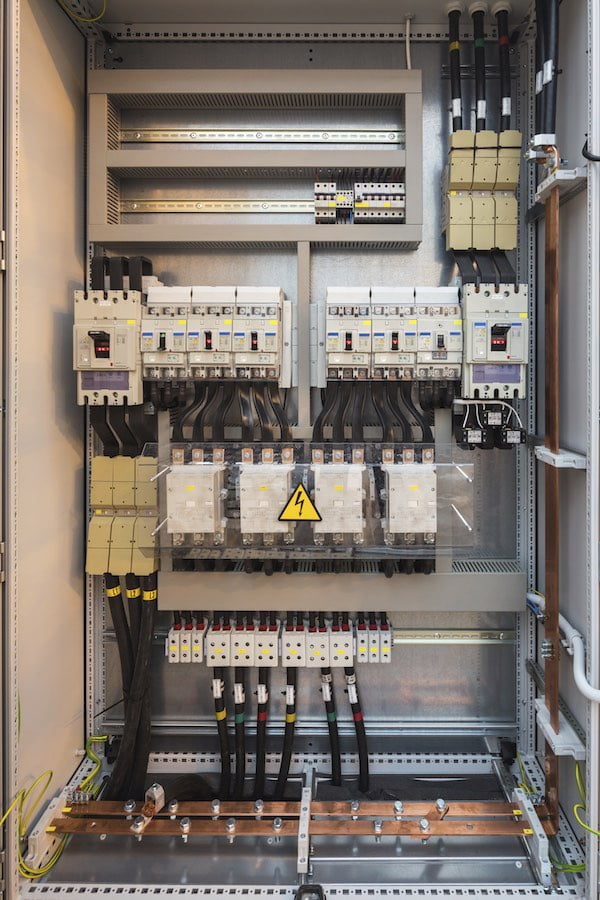How to Prevent Thermal Damage with Industrial Control Panels

Control panels protect equipment from mechanical damage, as well as inclement weather, corrosive chemicals, falling particulates, and spraying liquids. However, this protection is achieved at a cost: increased exposure to heat. Thermal damage to electrical equipment can result from a number of heat sources, including hot environments and nearby industrial ovens and furnaces. High levels of heat may also be caused by enclosing the heat generating equipment in an industrial control panel along with other heat-generating components.
Excess heat can cause electrical components, such as VFDs, contactors, and power supplies, to lose efficiency—for every degree increase above the manufacturer’s specified operating temperature, efficiency can be derated by two percent. As efficiency goes down, the amount of heat generated increases, compounding the effect.
Increased costs due to thermal damage
When operated above optimal temperature, components may require increased maintenance or repairs, and may shut down unexpectedly or fail early, leaving the industrial operation—and the business—in jeopardy or facing unplanned costs.
To retain the manufacturer’s rating for life expectancy and reliability of electrical equipment, each component in an industrial panel typically must be operated no higher than 40-50°C. Within the confines of an enclosure, which prevents the natural cooling effects of convection and airflow, and surrounded by other components that may create hot spots, the appropriate temperature can only be achieved with a properly designed active cooling system.
Choosing the right enclosure cooling system
An enclosure cooling system installed on an industrial control panel can maintain the recommended operating temperature range for each of the components. The choice of cooling technology will be based on both economics and the operating environment of the control panel.
Enclosure cooling systems range in price from economic filtered fan systems to air-to-air heat exchanger systems to enclosure air conditioners. However, not all systems will provide a safe amount of cooling for a given situation.
Filtered Fans
An enclosure filtered fan package which blows ambient air through the enclosure may adequately cool an industrial control panel with components generating a moderate amount of heat, and located indoors in a room-temperature environment with average humidity and low levels of dust and dirt. However, with many control panel enclosures shrinking in size and needed to accommodate more heat-generating equipment, alternative cooling solutions are often required.
Closed-loop protection
An enclosure with components generating high amounts of heat or located in an environment where it may be exposed to dust, dirt, water, and high temperatures may require a closed-loop cooling system that prevents the elements from reaching the sensitive electrical components within. Similarly, an enclosure located in a high-humidity setting, or exposed to heavy particulate matter, hazardous chemicals, or direct heat sources, may also require a cooling technology that seals off the interior.
Both air-to-air heat exchangers and enclosure air conditioners provide closed loop cooling that adds protection for equipment in these conditions. The selection of one technology over the other will depend on the size of the enclosure, the heat generated by the components, and the surrounding environment. The best way to select the right solution for a specific environment and cooling needs is to use a BTUH calculator.
For help in selecting the correct enclosure cooling system required to prevent thermal damage in an industrial control panel, contact the experts at Thermal Edge.

